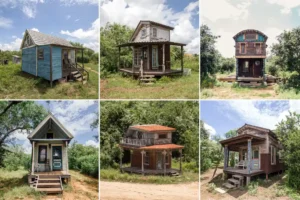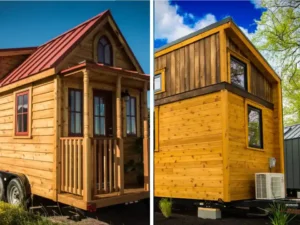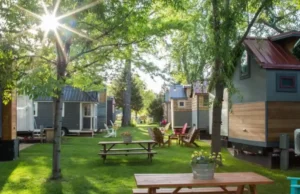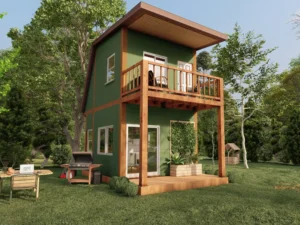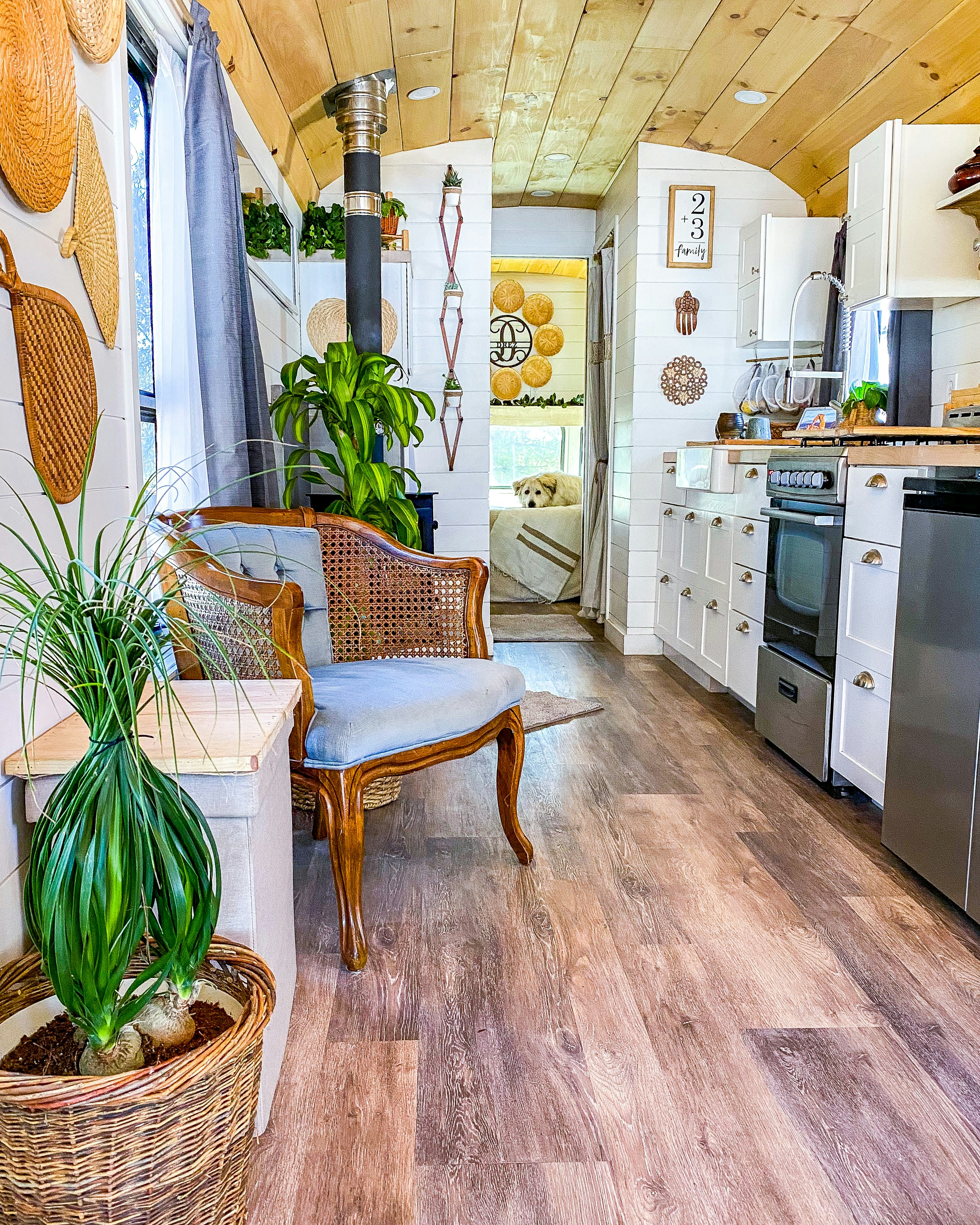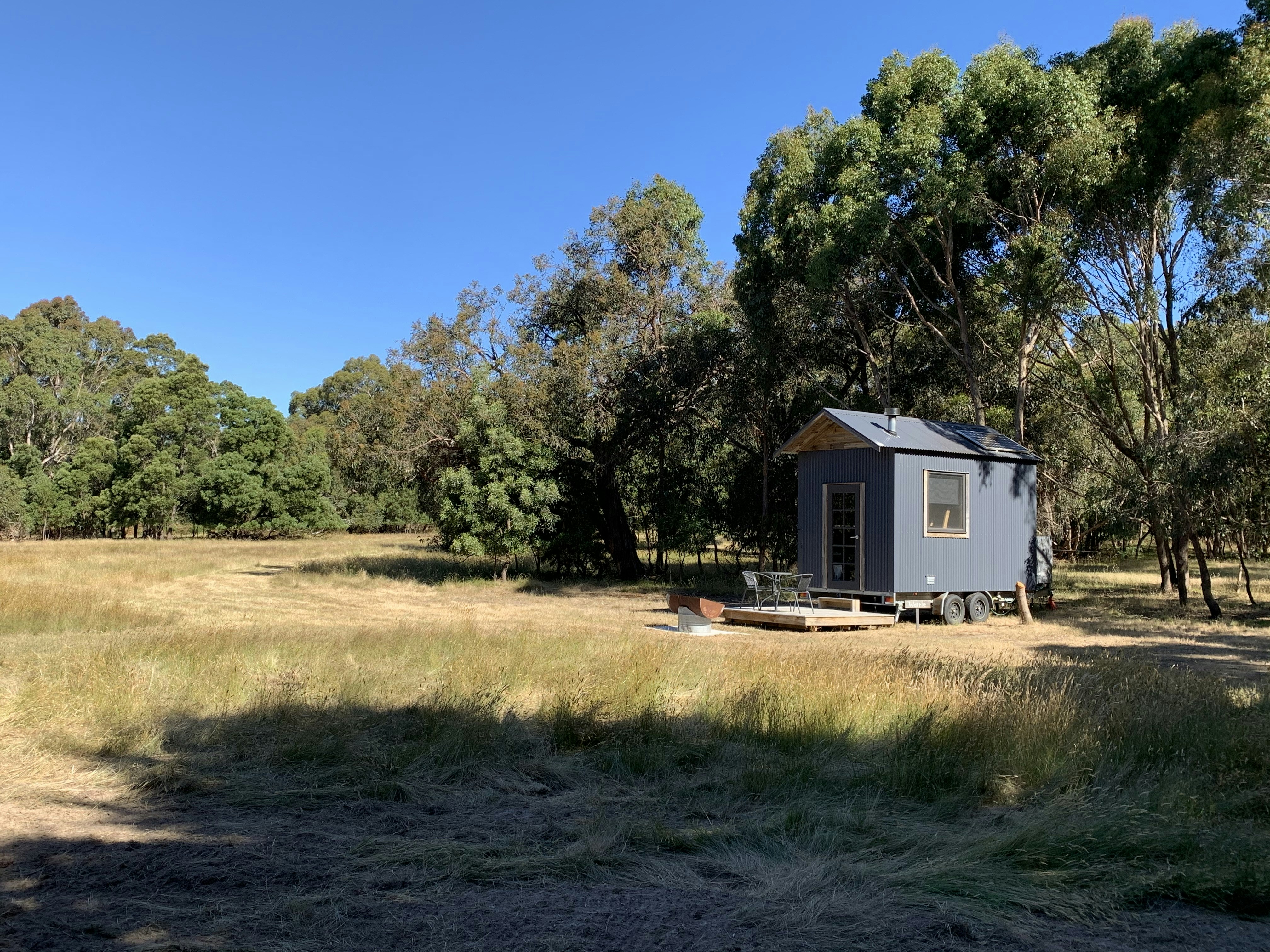
Understanding the Tiny House Movement
The tiny house movement is a social and architectural trend that advocates for downsizing living spaces and adopting a minimalist lifestyle. Its origins can be traced back to the early 2000s when individuals began seeking alternatives to conventional living arrangements. The movement has essentially evolved as a response to issues such as housing affordability, environmental concerns, and a burgeoning desire for a simpler, more fulfilling lifestyle.
Over the past decade, the popularity of tiny houses has surged, largely fueled by cultural shifts towards minimalism and sustainable living. People are increasingly recognizing the benefits of decluttering their lives—both physically and emotionally. The desire for financial freedom also plays a significant role, as tiny house dwellers often experience reduced housing costs, lower utility bills, and the ability to live debt-free. Consequently, the tiny house movement presents a compelling alternative for those seeking to escape the financial constraints of larger homes.
A ‘tiny house’ is generally defined as a dwelling that is under 400 square feet. However, this definition can vary, as some structures may encompass less space while others may slightly exceed this limit. Tiny houses come in diverse forms, including mobile units that can be transported via trailer, stationary homes built on foundations, and container homes repurposed from shipping containers. Their designs reflect a blend of functionality and innovation, with many emphasizing sustainability through the use of eco-friendly materials and energy-efficient technologies.
As the tiny house movement continues to grow, it highlights an essential transformation within society regarding how people choose to live and connect with their environment. Ultimately, it promotes a profound commitment to leading a life that values experiences and relationships over material possessions.
Benefits of Living in a Tiny House
The tiny house movement has gained significant traction in recent years, with many individuals and families embracing a more minimalist approach to living. One of the most compelling benefits of this lifestyle is the substantial reduction in environmental impact. Tiny houses consume less resources in terms of construction materials and energy usage when compared to traditional homes. With their smaller footprint, these dwellings inherently promote sustainable living practices, encouraging residents to adopt eco-friendly habits such as reduced consumption and increased recycling.
Financial savings is another key advantage associated with tiny house living. Homeowners typically experience lower maintenance and utility costs due to the reduced size of their homes. This can translate to lower property taxes, insurance premiums, and utility bills, making homeownership more affordable. Additionally, the compact nature of tiny houses often motivates residents to be more intentional about their purchases, leading to further financial prudence and an overall decrease in unnecessary spending.
Freedom and mobility are critical factors that draw individuals to the tiny house lifestyle. With many tiny homes designed to be portable, owners have the opportunity to travel while still enjoying the comforts of home. This nomadic lifestyle allows for a deeper connection with nature and the ability to explore new environments, all while minimizing the hassles associated with conventional homeownership.
Moreover, living in a tiny house can yield significant psychological benefits. By downsizing, individuals can experience reduced stress and anxiety stemming from the clutter and upkeep of larger homes. This lifestyle encourages an increased focus on personal relationships and experiences rather than material possessions, fostering a sense of community and connection. Ultimately, the tiny house movement promotes a harmonious lifestyle that prioritizes sustainability, financial freedom, and personal well-being.
Challenges and Considerations of Tiny House Living
While the tiny house movement presents a compelling option for sustainable living, it is essential to recognize the various challenges associated with this lifestyle. One significant concern is the zoning regulations that vary widely from area to area. Many jurisdictions have stringent building codes and restrictions on the minimum size of homes, which can complicate the placement of tiny houses. Potential homeowners often find it challenging to navigate these regulations, making it crucial to conduct thorough research on local laws and policies before committing to a tiny house.
Another notable consideration is finding suitable locations to park or build tiny homes. Despite the growing popularity of tiny houses, the availability of land specifically designated for these dwellings remains limited. Homeowners may be forced to juggle between private property regulations and community policies, which may not accommodate the unique needs of tiny house living. This obstacle often necessitates a creative approach, potentially involving partnerships with landowners or exploring alternative housing options like tiny house villages.
The downsizing process itself can be emotionally taxing and logistically challenging. Adjusting to a significantly reduced living space requires individuals to part with a substantial amount of their belongings. This endeavor can lead to feelings of loss and nostalgia, as cherished items must be let go. Furthermore, living in a confined space can test personal relationships, revealing underlying tensions that might go unnoticed in larger homes. Couples and families must develop exceptional communication skills to navigate the challenges that arise from living closely together, emphasizing adaptability and compromise.
In conclusion, while the tiny house movement offers appealing opportunities for sustainability and minimalism, prospective tiny home dwellers must consider the practical challenges that they may face. Addressing zoning laws, finding appropriate locations, and navigating the emotional journey of downsizing can ultimately shape the success and satisfaction with this alternative lifestyle choice.
The Future of the Tiny House Movement
The tiny house movement has gained considerable traction over the past decade, offering an alternative to traditional housing that emphasizes sustainability, minimalism, and community. As we look toward the future, it is evident that this movement is poised to evolve in response to several key trends in housing markets, societal values, and technological advancements.
Housing affordability is increasingly becoming a pressing issue in many urban areas. The tiny house model presents a viable solution to this challenge, allowing individuals and families to attain homeownership without the exorbitant costs typically associated with conventional homes. As property prices continue to rise, the demand for affordable housing options is expected to drive the expansion of the tiny house market. Additionally, with shifts in remote working and digital nomadism, more individuals may seek flexible living arrangements, further fueling interest in tiny homes.
Societal attitudes towards sustainability are also shifting, as more people recognize the impact of their lifestyle choices on the environment. The tiny house movement inherently promotes a smaller ecological footprint, appealing to environmentally-conscious consumers. Innovations in construction materials and sustainable building practices, such as the use of reclaimed or eco-friendly materials, enhance the attractiveness of tiny homes as a responsible living option.
Moreover, the emphasis on community-building among tiny house dwellers cannot be overlooked. Many individuals who choose this lifestyle seek a sense of belonging and shared values. Tiny house communities are emerging as social hubs that foster connections and collaboration, further promoting a sustainable lifestyle. These communities can play a significant role in future urban development, challenging traditional concepts of neighborhood design and affordability.
In conclusion, the future of the tiny house movement appears promising, driven by evolving housing markets, increasing environmental consciousness, and the desire for community. As these factors converge, the movement may significantly shape the way we think about, construct, and inhabit our spaces.


